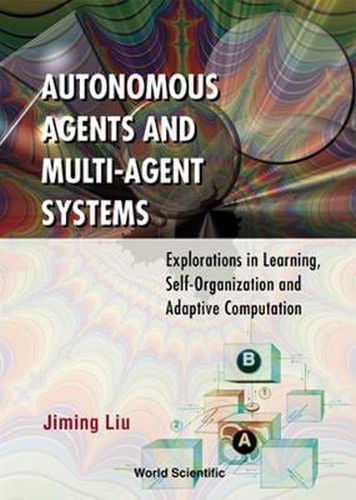Readings Newsletter
Become a Readings Member to make your shopping experience even easier.
Sign in or sign up for free!
You’re not far away from qualifying for FREE standard shipping within Australia
You’ve qualified for FREE standard shipping within Australia
The cart is loading…






An autonomous agent is a computational system that acquires sensory data from its environment and decides by itself how to relate the external stimulus to its behaviours in order to attain certain goals. Responding to different stimuli received from its task environment, the agent may select and exhibit different behavioural patterns. The behavioural patterns may be carefully predefined or dynamically acquired by the agent based on some learning and adaptation mechanism(s). In order to achieve structural flexibility, reliability through redundancy, adaptability, and reconfigurability in real-world tasks, some researchers have started to address the issue of multiagent cooperation. Broadly speaking, the power of autonomous agents lies in their ability to deal with unpredictable, dynamically changing environments. Agent-based systems are becoming one of the most important computer technologies, holding out many promises for solving real-world problems. The aims of this book are to provide a guided tour to the pioneering work and the major technical issues in agent research, and to give an in-depth discussion on the computational mechanisms for behavioural engineering in autonomous agents. Through a systematic examination, the book attempts to provide the general design principles for building autonomous agents and the analytical tools for modelling the emerged behavioural properties of a multiagent system.
$9.00 standard shipping within Australia
FREE standard shipping within Australia for orders over $100.00
Express & International shipping calculated at checkout
An autonomous agent is a computational system that acquires sensory data from its environment and decides by itself how to relate the external stimulus to its behaviours in order to attain certain goals. Responding to different stimuli received from its task environment, the agent may select and exhibit different behavioural patterns. The behavioural patterns may be carefully predefined or dynamically acquired by the agent based on some learning and adaptation mechanism(s). In order to achieve structural flexibility, reliability through redundancy, adaptability, and reconfigurability in real-world tasks, some researchers have started to address the issue of multiagent cooperation. Broadly speaking, the power of autonomous agents lies in their ability to deal with unpredictable, dynamically changing environments. Agent-based systems are becoming one of the most important computer technologies, holding out many promises for solving real-world problems. The aims of this book are to provide a guided tour to the pioneering work and the major technical issues in agent research, and to give an in-depth discussion on the computational mechanisms for behavioural engineering in autonomous agents. Through a systematic examination, the book attempts to provide the general design principles for building autonomous agents and the analytical tools for modelling the emerged behavioural properties of a multiagent system.